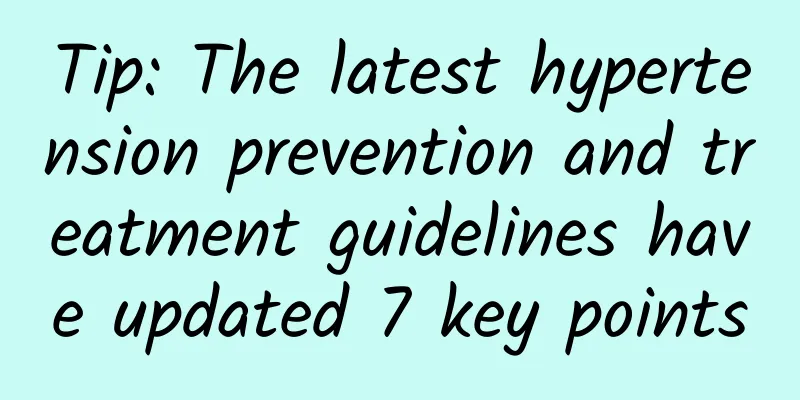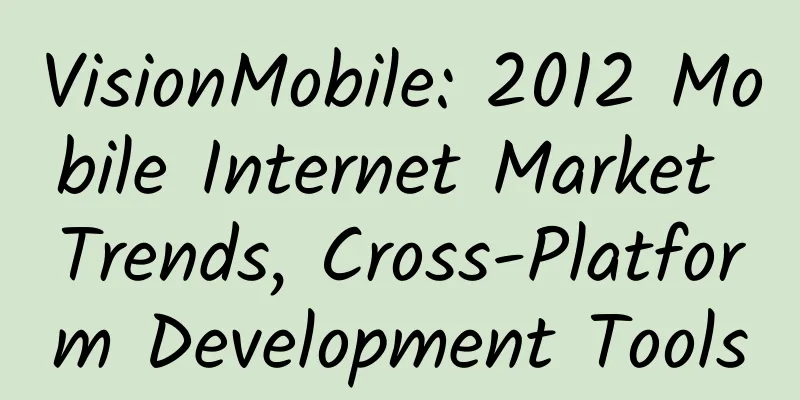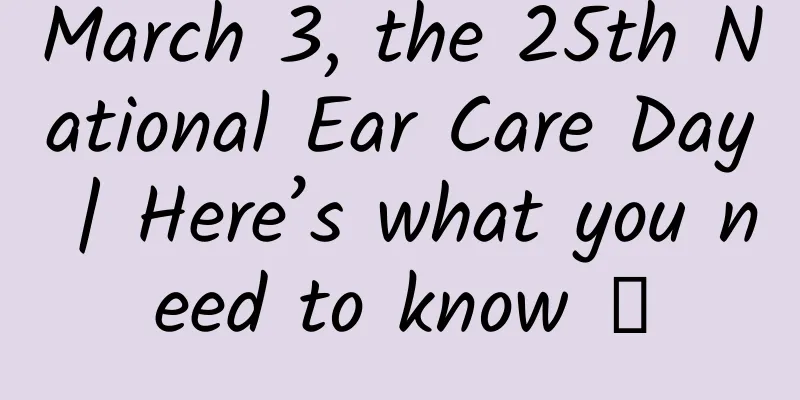Tip: The latest hypertension prevention and treatment guidelines have updated 7 key points

|
After 5 years, the new version of the Guidelines for the Prevention and Treatment of Hypertension is about to be released. On March 11, at the 2022 China Hypertension Annual Meeting and the 24th International Symposium on Hypertension and Related Diseases, experts and scholars involved in the revision of the guidelines interpreted the key points of the update of the "Guidelines for the Prevention and Treatment of Hypertension in China". 1. Northerners are more likely to have high blood pressure than Southerners Professor Wang Zengwu from the Fuwai Hospital of the Chinese Academy of Medical Sciences introduced the prevalence of hypertension in China. The latest survey data on hypertension in China showed that in 2018, the weighted prevalence of hypertension in adults aged ≥18 years in China was 27.5%. The prevalence of hypertension in China has generally increased, and the rising trend of hypertension among young and middle-aged people has been more obvious in recent years. From the south to the north, the prevalence of hypertension increases; the growth rate of hypertension in rural areas is faster than that in cities. Among them, high-sodium and low-potassium diet, smoking, social and psychological factors, overweight and obesity, excessive drinking, and advanced age are important risk factors for the development of hypertension in the Chinese population. 2. The diagnostic threshold for hypertension remains at 140/90 mmHg The diagnostic threshold for hypertension is ≥140/90 mmHg for office blood pressure (measured three times on different days). Professor Wang Jiguang from Ruijin Hospital affiliated to Shanghai Jiaotong University School of Medicine introduced the evaluation of various blood pressure measurement methods. Conventional office blood pressure is currently a common method for diagnosing hypertension, grading blood pressure levels, and observing antihypertensive efficacy in my country. The automatic office blood pressure measurement system will help standardize office blood pressure measurement. Blood pressure measurements should be performed out of the office whenever possible to confirm hypertension, evaluate antihypertensive efficacy, and identify white coat hypertension, concealed hypertension, and refractory hypertension. Dynamic blood pressure monitoring can also observe the circadian rhythm of blood pressure, nighttime blood pressure, and early morning blood pressure. The new guidelines proposed for the first time that hypertension can be diagnosed based on out-of-clinic blood pressure (dynamic blood pressure monitoring and home blood pressure monitoring), emphasizing the determination of hypertension phenotype based on out-of-clinic blood pressure and out-of-clinic blood pressure, and conducting classified management. 3. If your blood pressure is high, start by improving your lifestyle Professor Zhang Yuqing from the Fuwai Hospital of the Chinese Academy of Medical Sciences focused on the timing of initiating antihypertensive drug treatment, which depends on the overall cardiovascular risk, including blood pressure levels. Hypertensive patients with blood pressure levels ≥160/100 mmHg should immediately start antihypertensive drug treatment, and hypertensive patients with blood pressure levels of 140~159/90~99 mmHg who are at high and very high risk of cardiovascular risk should immediately start antihypertensive drug treatment; low-risk and moderate-risk patients can improve their lifestyle for 4 to 12 weeks. If blood pressure is still not up to standard, antihypertensive drug treatment should be started as soon as possible. For people with high-normal blood pressure levels of 130~139/85~89 mmHg, those with high and very high cardiovascular risk should immediately start antihypertensive drug treatment; for those at low and moderate risk, there is currently no evidence that they can benefit from antihypertensive drug treatment, and it is recommended to continue lifestyle intervention. 4. Lifestyle intervention changes from seven steps to eight steps Professor Sun Ningling of Peking University People's Hospital summarized the key points of lifestyle intervention for hypertension. Lifestyle intervention has changed from the seven steps in the 2018 version to the eight steps in 2023 ( reducing sodium intake, increasing potassium intake, proper diet, controlling weight, not smoking, limiting alcohol consumption, increasing exercise, psychological balance, and managing sleep ), and the "sleep management" measure has been added. 1. Reduce sodium intake and increase potassium intake ➤ Salt reduction measures are clearer and more precise: the sodium limit has been reduced from <6g salt to <5g; ➤ Use a simple urine spot formula to assess salt intake; ➤ Taking potassium supplements (including medications) to lower blood pressure is not recommended; ➤ Before using low-sodium and potassium-rich salt, renal function needs to be evaluated. For those with good renal function, it is recommended to choose low-sodium and potassium-rich salt alternatives; for those with renal insufficiency, a doctor should be consulted before potassium supplementation. 2. Eat a healthy diet The new guidelines recommend that patients adopt the DASH diet, CHH diet and spicy diet pattern to lower blood pressure. 3. Limit alcohol intake ➤Alcohol of any type is not good for the human body. To minimize health damage, it is recommended that patients with hypertension do not drink alcohol. ➤ If drinking, adults should not consume more than 15g of alcohol per day; ➤Evaluate alcohol use and develop personalized intervention plans based on the results. 4. Control your weight ➤ Patients with high normal blood pressure and all hypertensive patients should actively control their weight; ➤ All overweight and obese patients should lose weight; ➤ Set a weight loss of 5%-15% or more as a weight management goal; lose 5%-10% of your initial weight within 1 year; ➤ First, control weight through comprehensive lifestyle intervention, including self-monitoring of weight, proper diet, increased physical activity/exercise, and behavioral intervention; ➤ For those who have unsatisfactory weight loss results after comprehensive lifestyle intervention, drug therapy or surgical treatment is recommended; ➤ For special groups, such as lactating women and the elderly, individualized weight loss measures should be adopted according to specific circumstances; ➤You should stick to the weight loss plan for a long time. The speed varies from person to person, so don't rush for quick results. 5. Exercise intervention Patients can adopt exercise intervention measures such as aerobic exercise, resistance exercise, meditation and breathing training, flexibility training and stretching training. For hypertensive patients with well-controlled blood pressure, a mixed training with aerobic exercise as the main component (moderate intensity, 30 minutes per day, 5-7 days per week) and resistance exercise as the auxiliary component (2-3 times per week) is recommended; it is also recommended to combine breathing training with flexibility and stretching training. For those with uncontrolled blood pressure (SBP >160mmHg), high-intensity exercise is not recommended before blood pressure is controlled. 6. Don’t smoke ➤ Hypertensive smokers should be strongly advised and urged to quit smoking; ➤If necessary, use smoking cessation drugs to combat withdrawal reactions; ➤Try to avoid using e-cigarette alternative therapies; ➤ When quitting smoking, supplement it with physical exercise; ➤Combined smoking cessation intervention; ➤Personalized smoking cessation intervention. 7. Maintain psychological balance ➤Self-adjustment to avoid psychological imbalance; ➤Build defense barriers and maintain psychological balance, such as physical defense, emotional defense, and spiritual defense. 8. Manage sleep Increasing effective sleep time and/or improving sleep quality can significantly increase the efficacy of antihypertensive drugs and reduce the morbidity and mortality of hypertension. The main measures for managing sleep include sleep assessment, sleep cognitive behavioral therapy, and drug treatment when necessary. 5. Hypertensive patients should usually take antihypertensive drugs in the morning Professor Chen Luyuan of Guangdong Provincial People's Hospital systematically reviewed the drug treatment of hypertension. Professor Chen Luyuan pointed out that compared with the 2018 guidelines, the new version of the guidelines has increased the time of taking medication. ** Ordinary hypertensive patients should usually take medication in the morning. ** Unless it is clearly necessary to control the increase in blood pressure at night, it should not be routinely recommended to take antihypertensive drugs before bedtime. In addition, the basic principles for the use of antihypertensive drugs include risk reduction, long-term antihypertensive, combination therapy, starting dose, medication time, and individualized treatment. It is recommended to choose antihypertensive drugs that have evidence to support the reduction of cardiovascular disease and mortality risks to reduce patient risks. 6. The blood pressure reduction standard for the elderly over 80 years old can be appropriately relaxed Professor Zhang Xinjun from West China Hospital of Sichuan University explained the treatment of hypertension in special populations. Compared with the 2018 version, the 2023 version of the guidelines added clinical assessment of hypertension in the elderly. Suggestions: ➤The blood pressure target for the elderly aged 65 to 79 is <140/90 mmHg. If the patient can tolerate it, it can be reduced to <130/80 mmHg. The blood pressure target for the elderly aged 80 and above is <150/90 mmHg . ➤ The blood pressure target for patients with multiple comorbidities or geriatric syndromes needs to be individualized. The SBP target for frail patients is <150 mmHg and should not be <130 mmHg. 7. Some foods and drugs can also cause high blood pressure Professor Li Nanfang from the People's Hospital of Xinjiang Uygur Autonomous Region mainly interpreted secondary hypertension, some of which are foods and drugs that can also cause hypertension. ➤ Food-induced hypertension Hypertension is related to diet. Excessive sodium intake and excessive saturated fatty acids in the diet are closely related to changes in blood pressure. A reasonable diet is beneficial to the prevention and treatment of hypertension and reduces the risk of cardiovascular disease. ➤ Drug-induced hypertension Drug-induced hypertension refers to the increase in blood pressure caused by the regular dose of the drug itself or the interaction between the drug and other drugs. When the blood pressure is greater than 140/90 mmHg, it is considered drug-induced hypertension. Drugs that can cause high blood pressure mainly include non-steroidal drugs, antihistamines, thyroid hormones, antidepressants, oral contraceptives, anti-tumor drugs, catecholamines, etc. This article is compiled from: |
<<: It's allergy season again, and the real "culprit" is actually this! How to prevent it →
Recommend
Why is my aunt's blood bright red?
Women must observe the color of their menstrual p...
Symptoms of 18 weeks pregnancy
Because the bodies of pregnant women in the early...
What are the benefits of having a spa?
With the development of society, people nowadays ...
Why do people who don’t feel sick when riding in a gasoline car feel sick when they get on a tram?
Why do people who don’t feel sick when riding in ...
What is needed for a high-speed rail to use an artificial passage? What do the red, orange, and green colors of high-speed rail seats represent?
High-speed rail has become an important way for m...
What is the cause of yellow leucorrhea and itching without odor?
For women, leucorrhea can be said to be a baromet...
What is the meaning of rh hemolysis
To put it simply, Rh hemolysis means that if the ...
First aid for tooth loss and trauma
Author: Wang Xinyu School: Harbin Medical Univers...
Why do I always have dry mouth at night?
Many people will find that they are prone to dry ...
What to apply on stretch marks
For pregnant mothers, stretch marks are very comm...
Will ovulation occur on the third day after menstruation ends?
When many women have sex with other women, if the...
What are the tips for treating vulvar leukoplakia?
The problem of vulvar leukoplakia is a gynecologi...
It's too loose down there. How can I tighten it?
Due to long-term and frequent sexual intercourse,...
What happens after the transplant is implanted?
What symptoms after embryo transfer indicate that...









